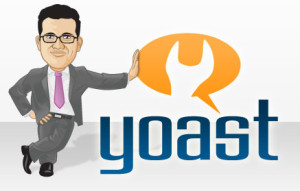 During Andy Crestodina’s webinar “The Lies and Truths of Google Analytics” last week, there was a lot of discussion on the Spin Sucks Pro hashtag about Google+ authorship and authority.
During Andy Crestodina’s webinar “The Lies and Truths of Google Analytics” last week, there was a lot of discussion on the Spin Sucks Pro hashtag about Google+ authorship and authority.
A topic that continues to evade many, Andy spent more time answering questions about that at the end than he did on anything else.
As luck would have it, the very same day, Christopher Penn wrote, “How to Set Up Google+ Authorship” and gave you step-by-step directions for using the Yoast SEO plugin on your WordPress site.
While we had already taken the steps to set it up on the Google+ side, as both Andy and Chris noted, we still had to use ?rel=author in every blog post so Google would know what I’ve written vs. one of our guest bloggers.
Kind of a pain, eh (I’ve been around Lindsay Bell too long)?
So I set about to install the Yoast SEO plugin as Christopher suggested, deactivate All-in-One SEO pack, and be on our merry way.
It turns out, it’s not as easy as it seems.
Setting Up and Using the Yoast SEO Plugin
If you were here on Friday, you noticed our title tag said “Untitled” instead of “Spin Sucks.” I was a little stressed out. It turned out, the Yoast SEO plugin wasn’t talking to our code so that had to be fixed by a professional. But, during the process, I learned a lot more about what you can do without breaking the site (and trust me, I thought I had broken it).
- Install and activate the Yoast SEO plugin. This is the easiest part. It does all the work for you and you don’t feel like anything you update or change will give you untitled page tags. Yay for the first step!
- Open the Yoast dashboard. It looks like this in your sidebar. See the little orange icon? That’s where you’ll click.

- Set up your general settings. You can take the tour, but it really just explains what each tab is, rather than tell you how to set it up. Click all the buttons you see below. If you want to set up your Webmaster tools, do it here. I’ve chosen not to, but may add it later.
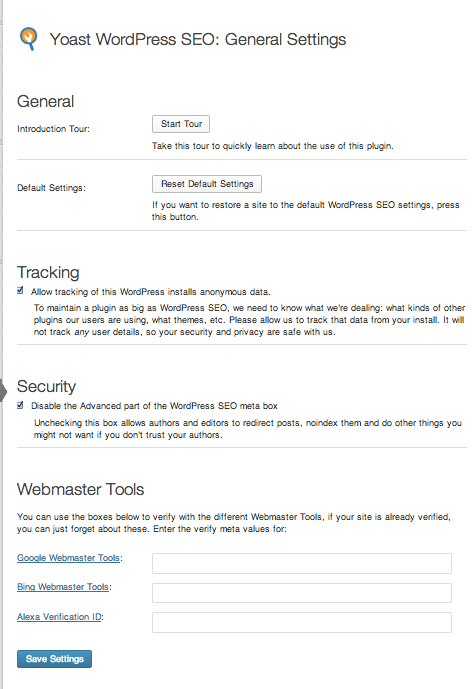
- Open “Titles and Metas” and make sure you’re on the “general” tab. Click all the boxes you see below and make sure the “use meta keywords tag” button is not clicked. This is because, with the Penguin update, Google no longer counts keywords. Plus, you don’t want to be considered keyword stuffing so it’s safer not to use it.
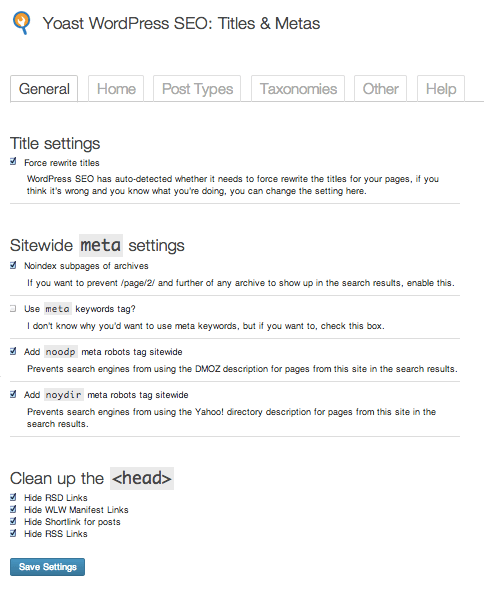
- Click on the “Home” tab (still in “Titles and Metas”). This is where you’ll add your blog’s title, the meta description, and set up your Google+ authorship. This is where you really have to use your brain so think long and hard about what you want here.
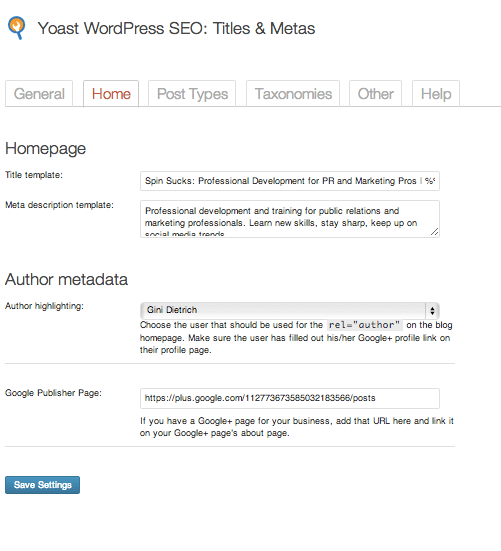
- Click on the “post types tab” (still in “Titles and Metas”). This pretty much stays the same as the factory settings. Make sure the buttons are clicked and unclicked as shown below. I added “%%excerpt%%” to each meta description template box. I’m not sure you have to do that. You can try both ways.
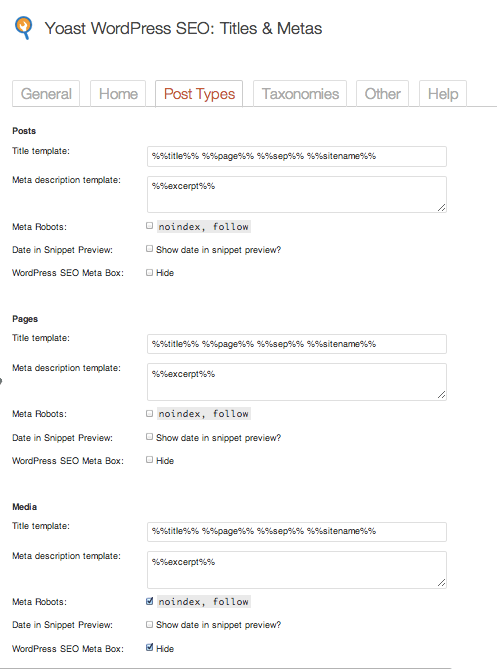
- Click on the “taxonomies” tab (still in “Titles and Metas”). This one also stays pretty much the same as the factory settings. I added the “%%excerpt%%” to each meta description template box. Click buttons as you see below.
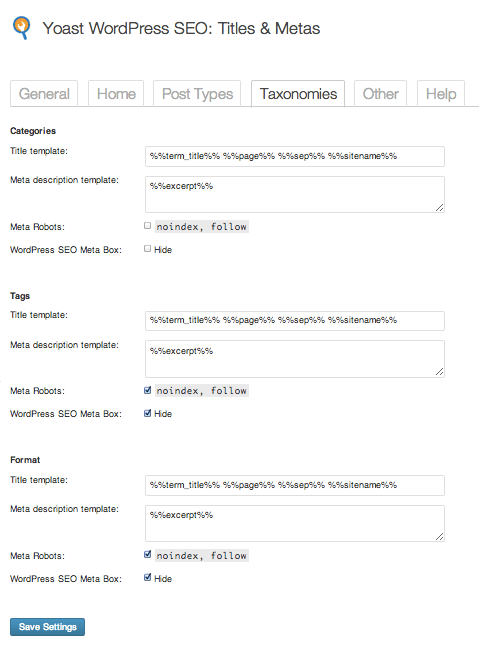
- Click on the “other” tab (still in “Titles and Metas”). The word “archives” is present in the factory settings in this one. Everyone on earth suggests you delete that, so I did. I also added the “%%excerpt%%” to each meta description template box. Click buttons as you see below. I also updated the verbiage for the 404 error page from “Error Found” to something goofy.
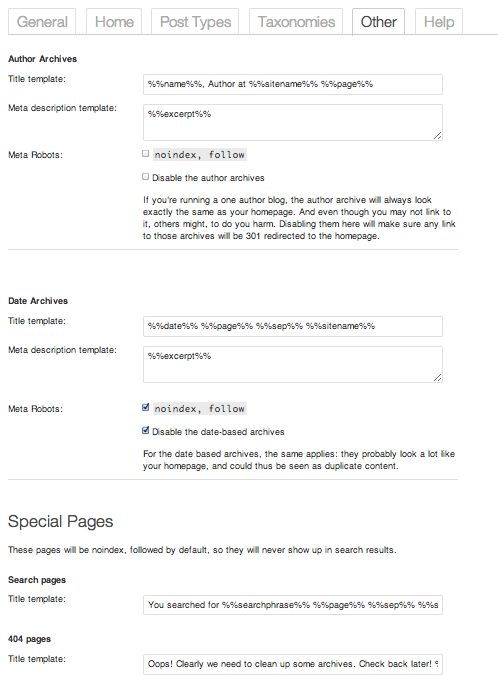
- Go back to the orange icon in your sidebar and open “Social.” This is where you can add your fan page and your Twitter handle. You’ll see we don’t have the fan page set up yet because I’m not an administrator and I keep forgetting to ask Yvette Pistorio to do that for me. Maybe she’ll see this and help me out!
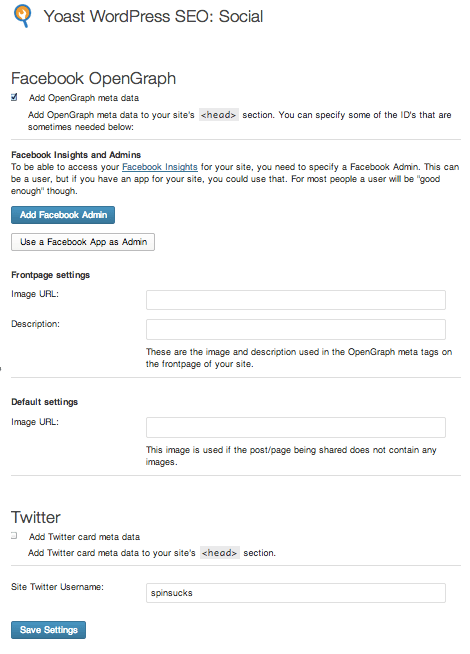
- Go back to the orange icon in your sidebar and open “XML Sitemaps.“ This one was super helpful for me to actually see what needed to be clicked or not clicked. The screen grab below shows you what to do.
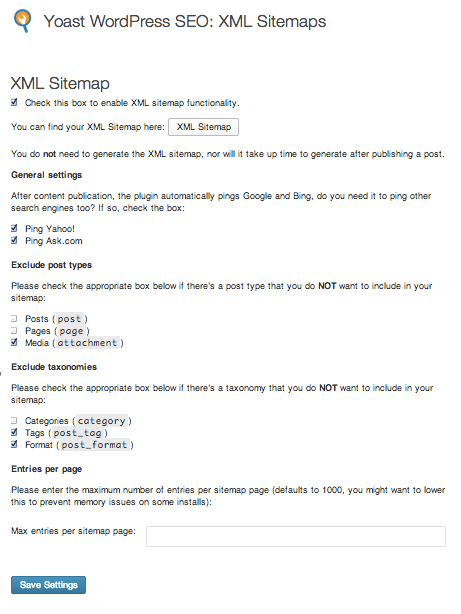
- Go back to the orange icon in your sidebar and open “Import & Export.“ I imported both from the All-in-One SEO pack and the OLD one, just in case. Then I went into some old blog posts to make sure the SEO settings were in each of them. Then I went back to “Import & Export” and I clicked “Delete the old data after import.”
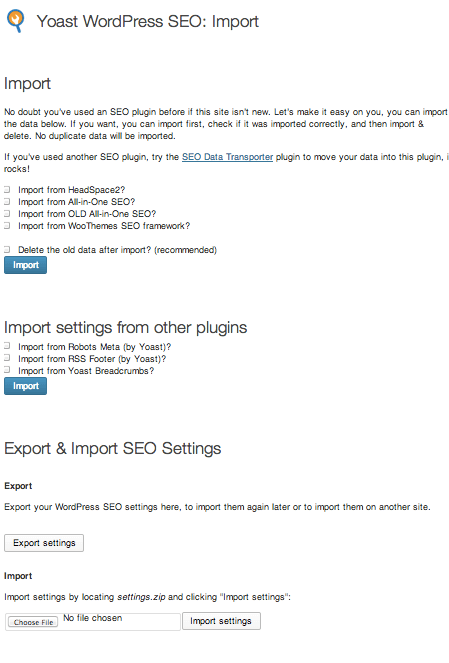
To get all of this accomplished, I read 12 or 13 blog posts. Every, single one of them suggested not to touch “Permalinks,” “Internal links,” or “RSS,” if you’re not a programmer or developer. While I checked them out, I didn’t add or change anything in them.
Hopefully this helps you if you’re planning to do the same thing. It’ll save you about four hours of pain and agony.